SUMMARY
This is AI generated summarization, which may have errors. For context, always refer to the full article.
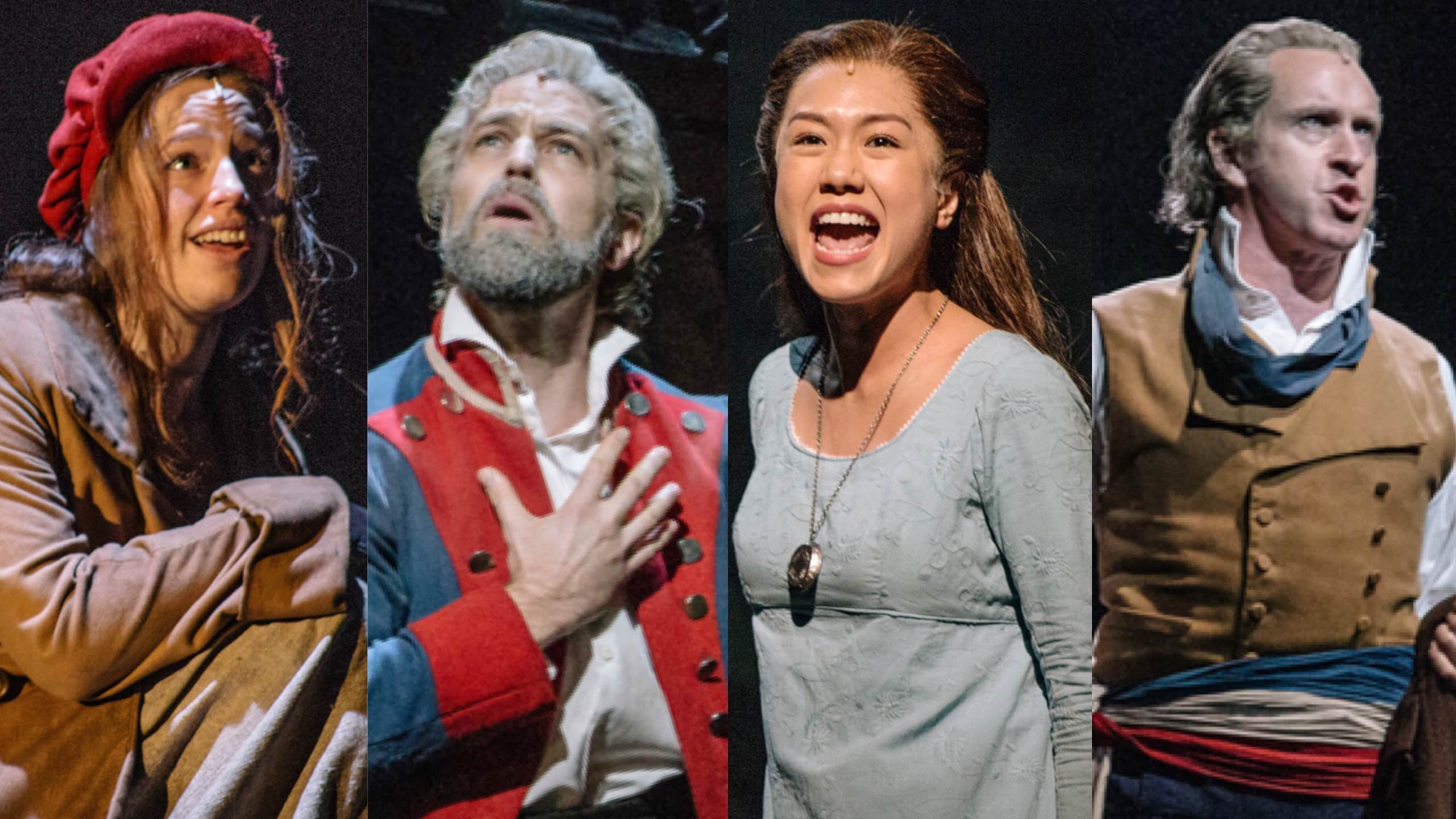
The best barometer for a Les Miserables production is how stirring its rendition of the song “One Day More” is, in my opinion. The song, which caps the first half of the popular musical, should be a rousing spectacle, a powerful medley of melodies, emotions and sights that culminates in a crescendo of beautiful voices declaring their hopes, fears, aspirations, worries and excitement for that unpredictable tomorrow.
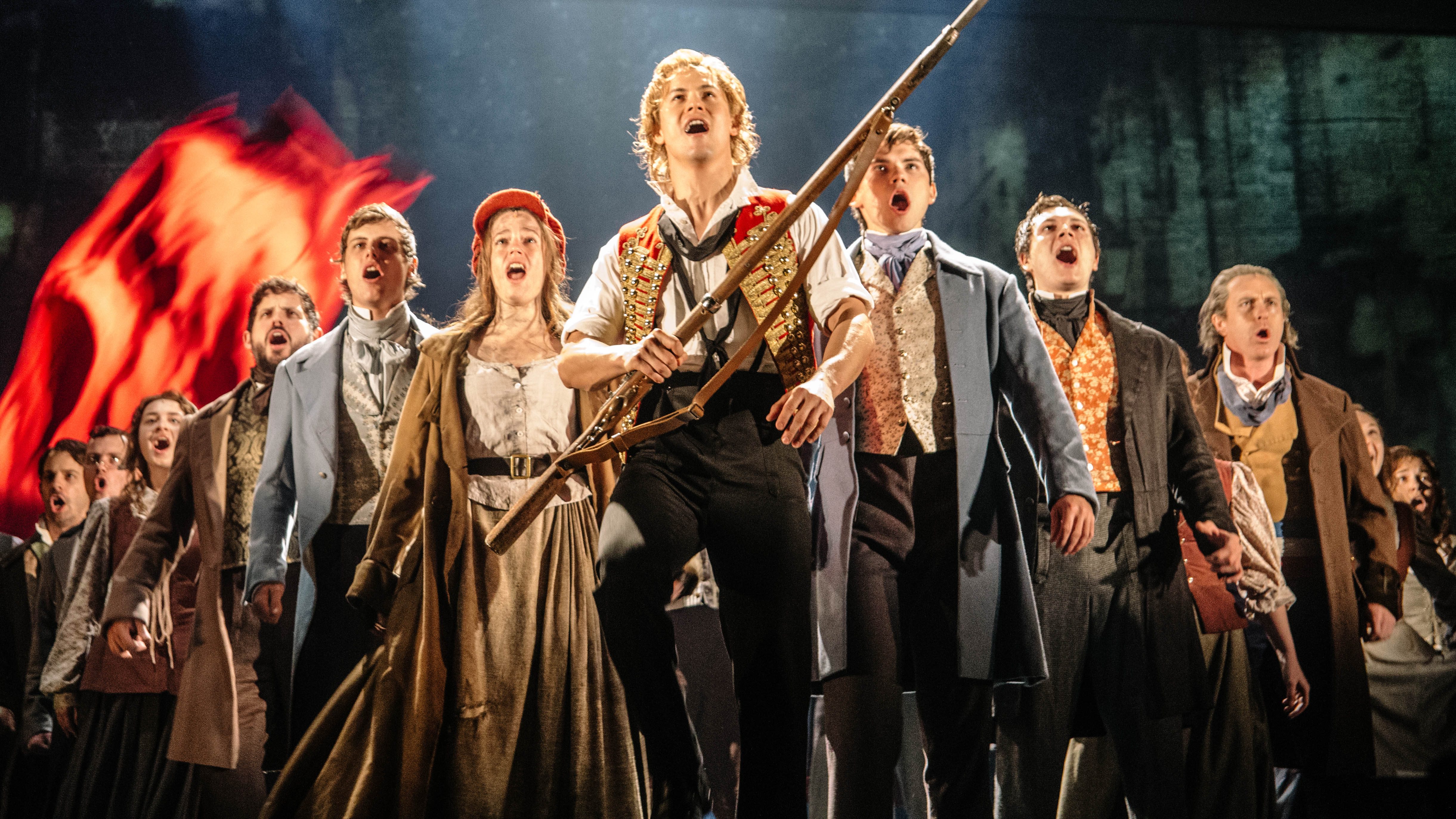
In the movie version directed by Tom Hooper, the song presented quite a problem. Hooper insisted on differentiating the film by maximizing the use of close-ups, with the film almost completely consisting of faces of the characters while belting out their trademark songs. Unfortunately, this forced a song like “One Day More” to feel disjointed, with Hooper hurriedly editing his gorgeously shot portraits of all the characters to catch the drift of the melody. In the end, the song felt poorly constructed and rather confused as opposed to being the counterpoint of all the themes of the musical.
One day more in Manila
One Day More in the Manila staging overtly showcases the strengths and weaknesses of the production.
#LesMis cast sings "One Day More" at special PH media call https://t.co/9goC7Klgf8
— Rappler (@rapplerdotcom) March 15, 2016
As soon as Jean Valjean, played here by Simon Gleeson, sings the first few lines of the song, the stage quietly trembles with the weight of this man’s burdens.
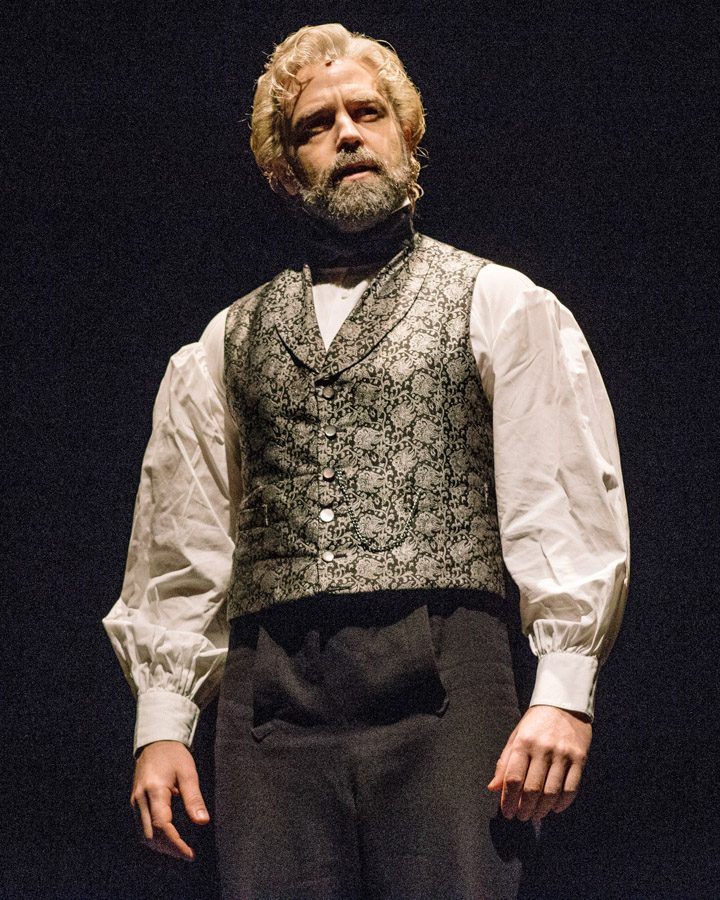
It’s a weight he has borne throughout the years of moving around the land, later with his ward, Cosette.
His solo gives way to the heartfelt duet of Marius and Cosette, played by Paul Wilkins and Emily Langridge respectively.
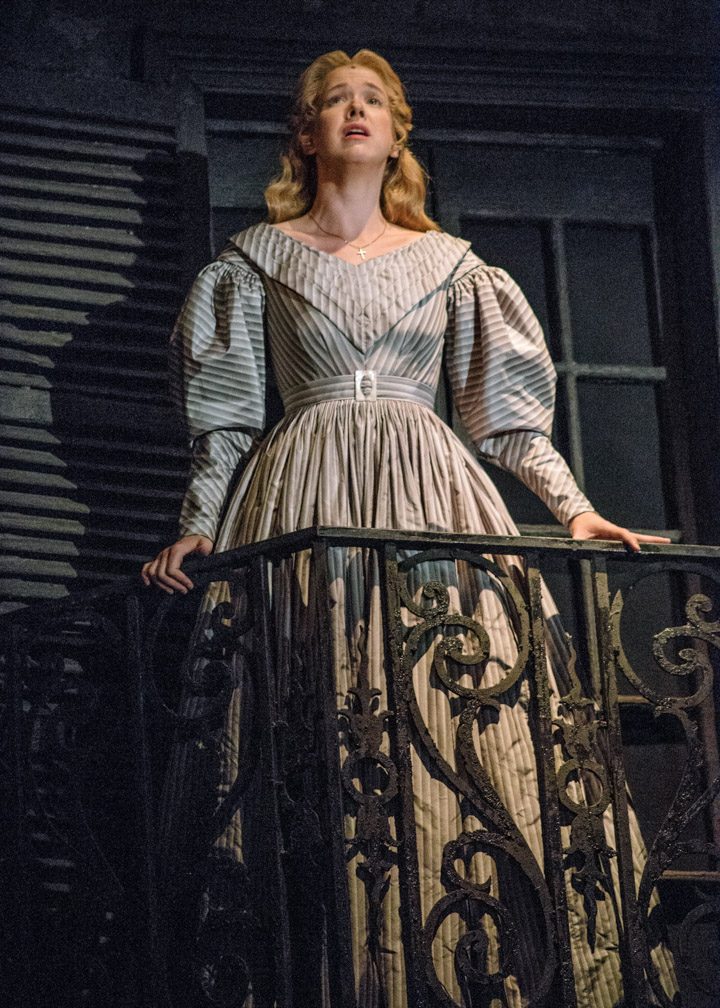
The lovers are located on both ends of the stage, singing from windows with the rest of the stage representing the distance between them.
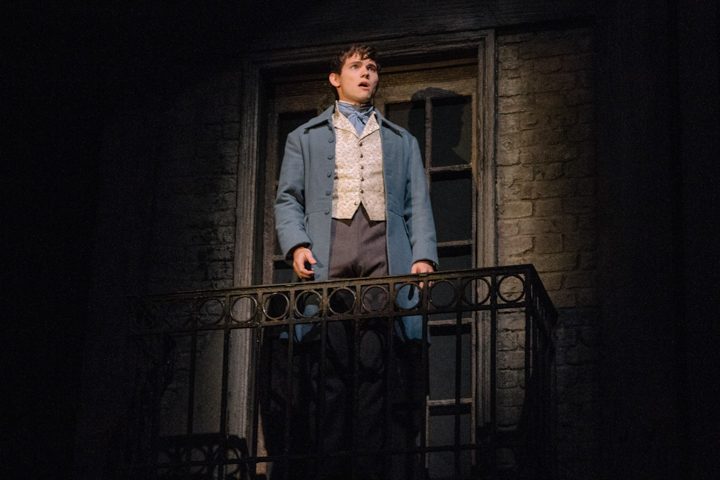
Lonely Eponine, played by Kerrie Anne Greenland, is in the middle of the stage, interrupting the lovers’ melody with her melancholic interjections.
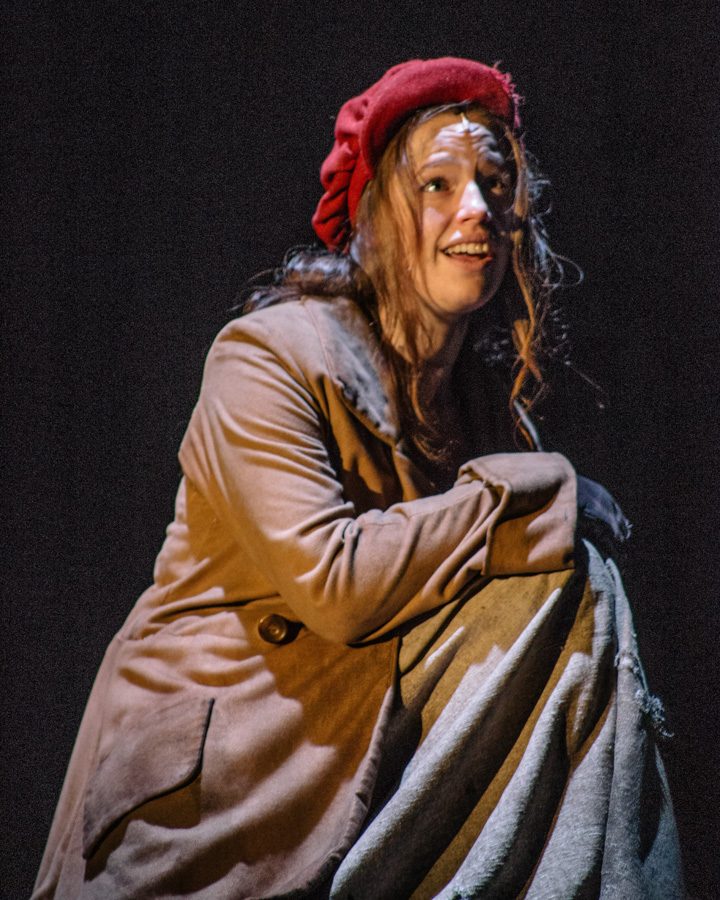
The song picks up momentum when the students of the revolution, headed by Enjolras, start roaring their battle cries, while Javert and the Thenardiers push their respective agendas into the mix.
The song climaxes with the famous counterpoint, the stage brimming with voices, movements, gestures, and energies, all in unison despite the jarring and warring intentions and predispositions of all the characters.
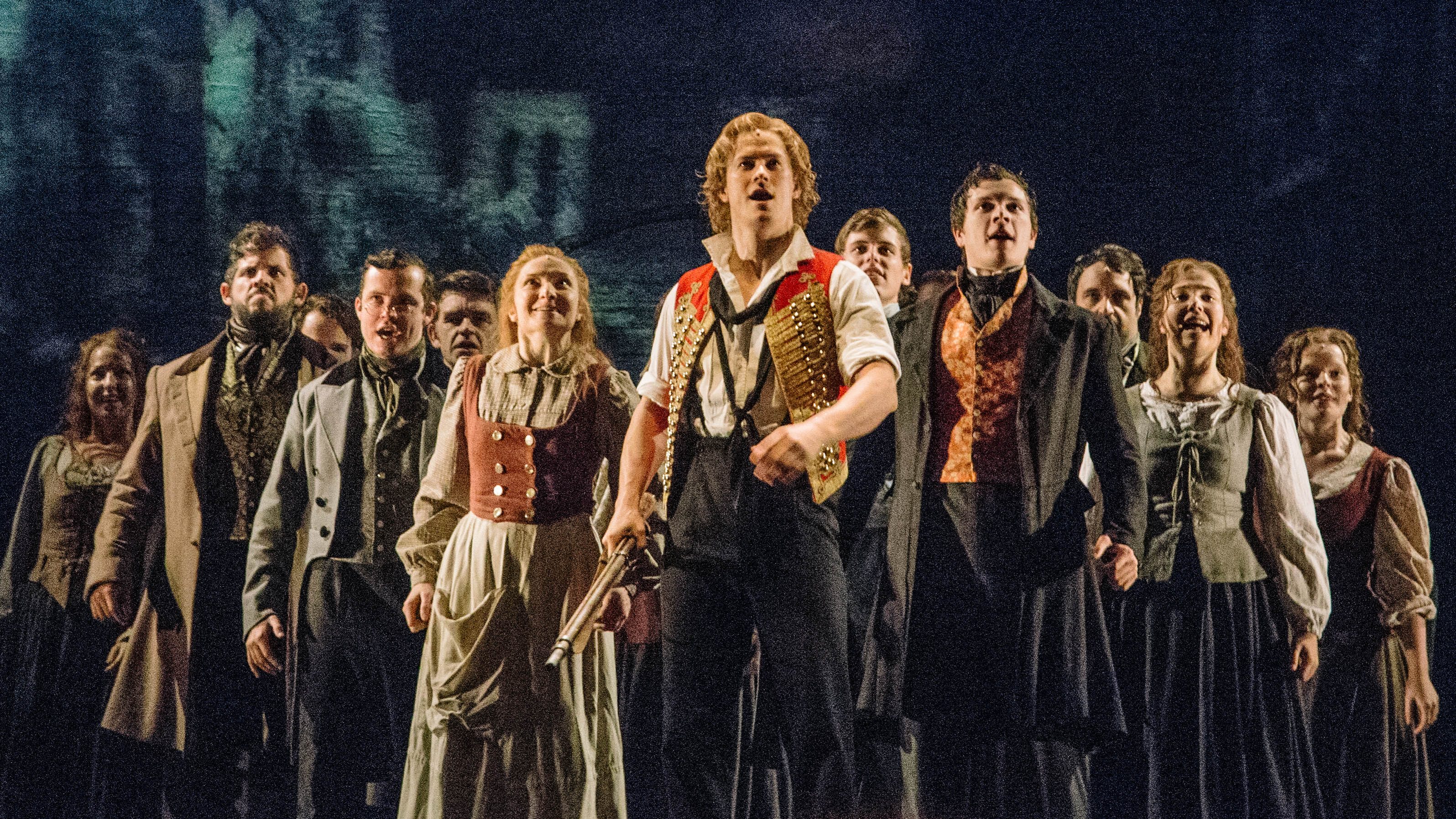
It’s quite good. It’s almost impossible not to get moved by the genius of the song that sums up all the themes and melodies of the musical in one bite-sized sing-able ensemble piece.
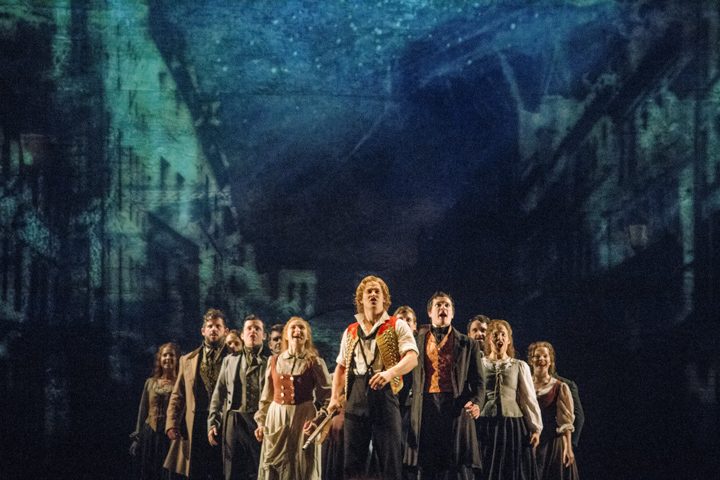
The Manila production, if based on One Day More alone, has all the talents and skills in place. However, it also sometimes feels small, or at least smaller than what you would imagine from a production that has become synonymous with spectacle.
Working with the limitations of the stage
Evidently, the Manila production has limitations, first and foremost of which is the size of the stage of The Theatre at Solaire.
Given this, the production makes most of what it has, scaling a lot of the props and sets to fit the venue. The barricade, which has always been one of the primary attractions of the show given that it is the setting for a lot of the action sequences, has been reduced, which forces on the viewers the view from only behind the walls where the students are waiting to fight. This decision lessens the impact of a lot of the show’s emotional crests, such as Gavroche’s heroic death.
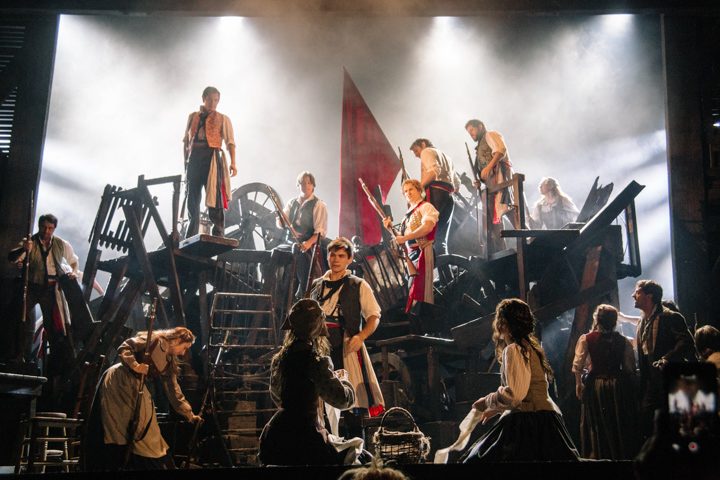
Whatever lack in magnitude however is replaced by intimacy. Given that the spectacle has been diminished, both the creative team and the cast are now hard pressed to come up with a show that still tells a grand, sweeping story.
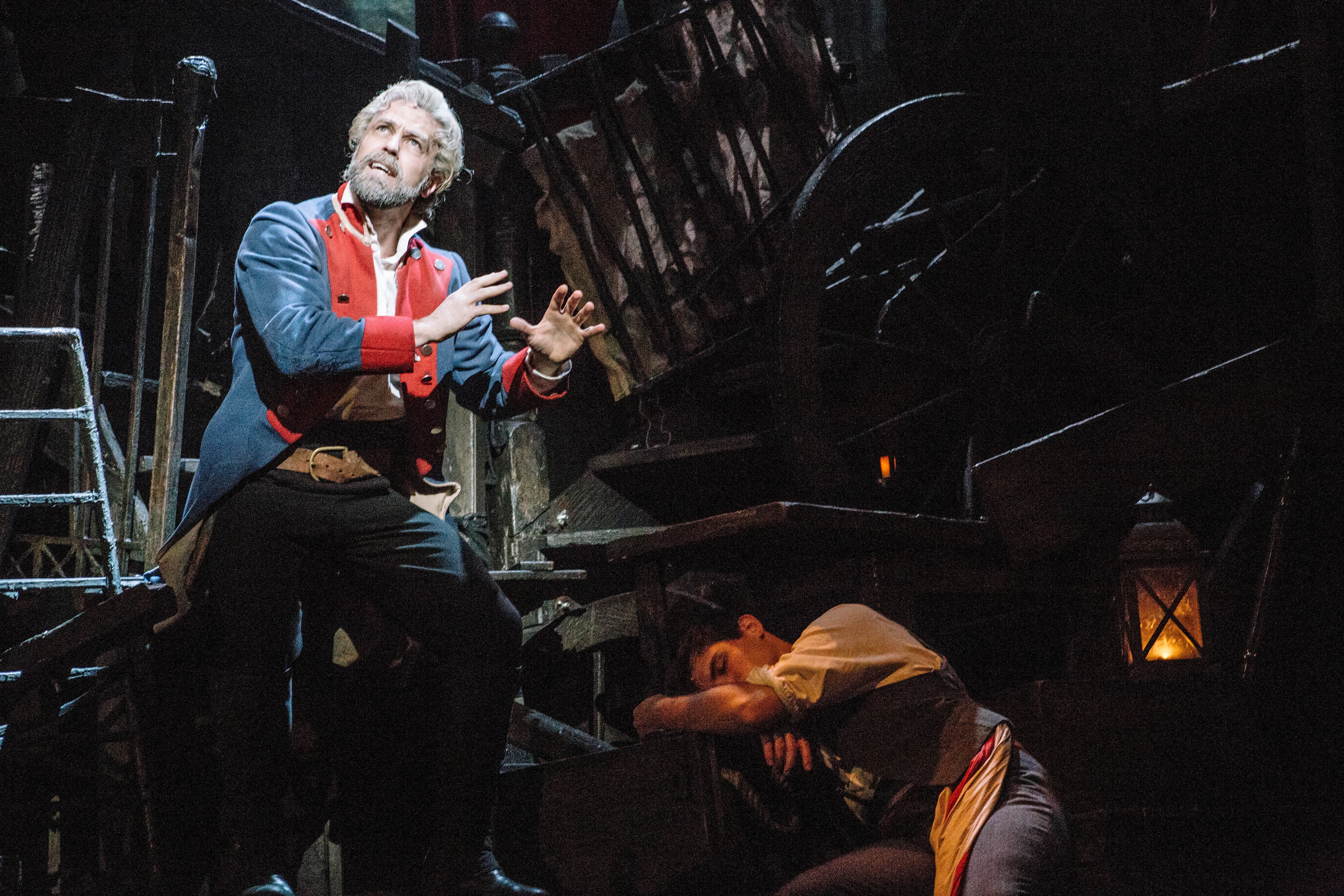
There are beautiful set pieces. Javert’s solo is both solemn and sublime – it concludes with a masterfully crafted suicide that distorts perspective to maximize the meager space.
The entire sequence wherein Eponine brings Marius to Cosette’s house is a delightful display of how the students of the revolution are in fact kids in real life, submitting to the whims and aches of youthful romance.
Perhaps it is because the characters in the love triangle are not too swayed by the misery of the musical’s affairs, which enables the actors to infuse their roles with a certain sense of levity which I have never seen before.
Valjean and company
Of course, the show truly belongs to Gleeson’s Valjean. His transformation from the nearly feral slave of the opening song to the saintly old man in the ending is lovely.
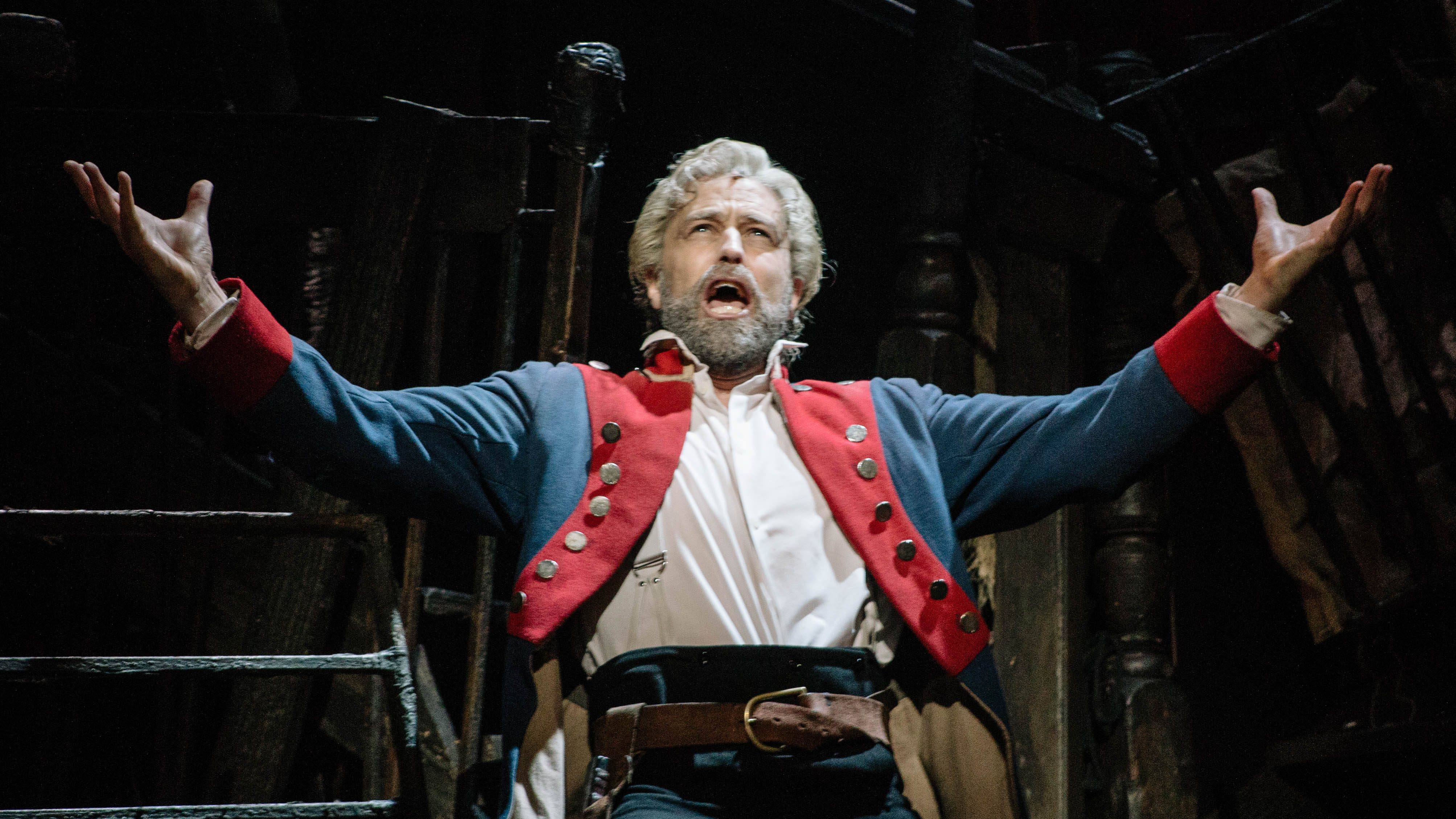
Gleeson’s expert control of the character is clearly shown in both his delicate gestures and his impeccable singing.
WATCH: Simon Gleeson sings ‘Bring Him Home’ in ‘Les Miserables…Simon Gleeson as Jean Valjean sings "Bring Him Home" in Les Misérables Manila. Full story: http://rplr.co/1V8Qxn5
Posted by Rappler on Tuesday, March 15, 2016
Sure, he sometimes plays around with the melody to enunciate emotions, perhaps taking a cue from the cast of Hooper’s movie to the beloved songs. However, he never misses an emotional cue. There are subtleties to the performance that put further dimensions to even the other characters.
What is most intriguing about Les Miserables is that while it focuses primarily on the life and journey of Valjean from completely destitute to a man of astounding dignity, it is also about the various people who represent the sort of inequity and injustice that pervaded the time.
His interactions with Javert, a man flawed by his sense of honor and duty; with Fantine, played here by a terrific Rachelle Ann Go, whose tragedy has opened for Valjean a path to righteousness; and with Marius, whose undying love has allowed for Valjean to let go, encompass the full spectrum of the period.
#lesmis @gorachelleann as #fantine. Full performance of ‘I Dreamed A Dream’ at special PH media call https://t.co/2kIsedgo5X
— Rappler (@rapplerdotcom) March 15, 2016
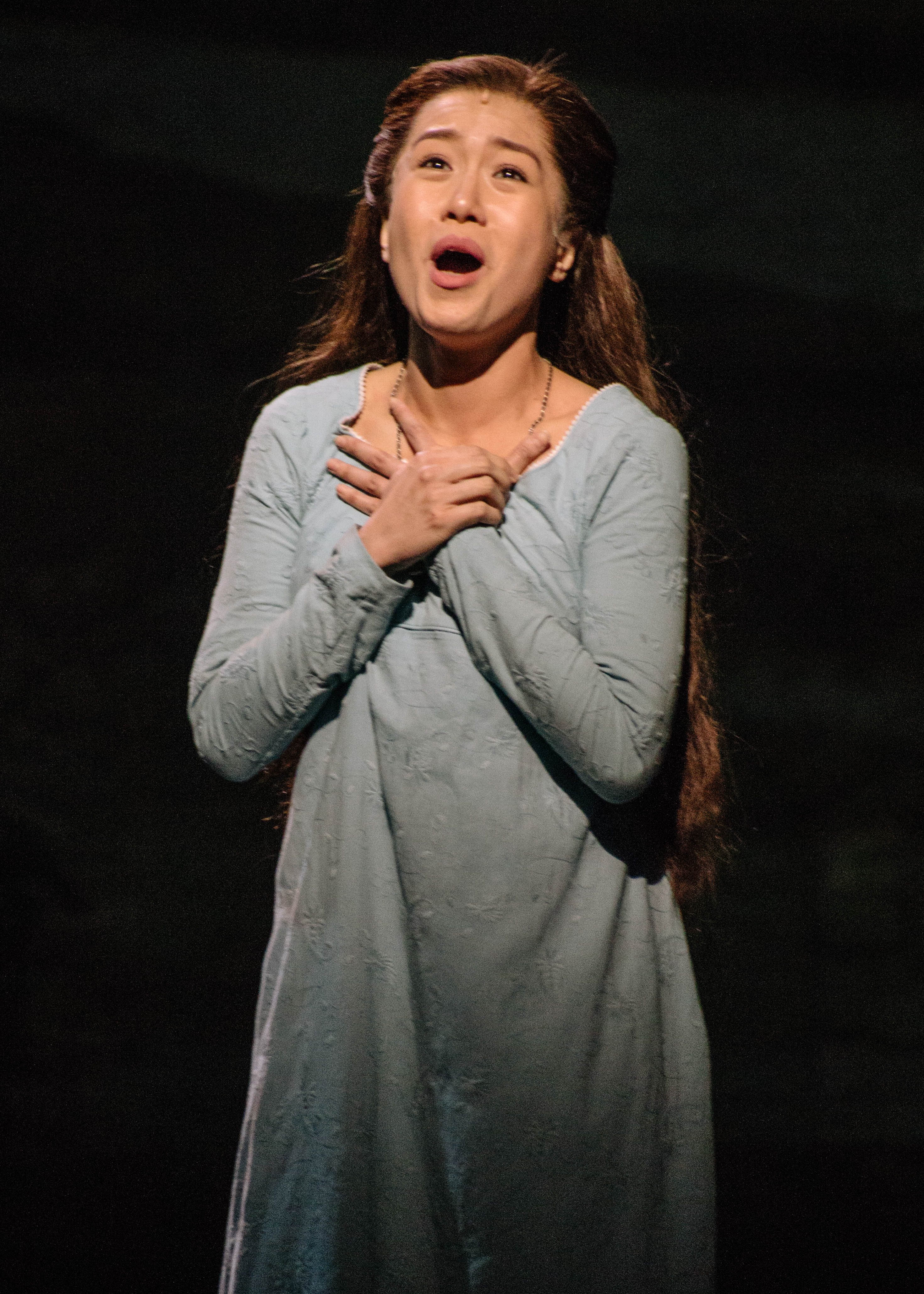
The musical, if deflected from the popularity of its big songs like “I Dreamed a Dream”and “On My Own,” actually lays down the more basic themes of Victor Hugo’s novel with admirable simplicity.
Perhaps the toning down of the show has helped the musical put further emphasis on the songs that do not get too much attention, such as “Turning,” which is presented here as a deceptively delightful counterpart to the more depressing “Lovely Ladies”of the first act.
In fact, it’s a thinly veiled critique to the futility of the revolution that saw the deaths of promising men and women. The cynicism is actually quite refreshing. There is more to the musical than the familiar tales of reversals of fortune and unrequited love.
‘Les Miserables’ cast performs the epilogue (with Rachelle Ann…In the epilogue of Les Miserables – Musical, we hear a beautiful exchange between Jean Valjean and his loved ones – plus the powerful ending that asks, ‘Do you hear the people sing?’
Posted by Rappler on Wednesday, February 24, 2016
Worth the repeat
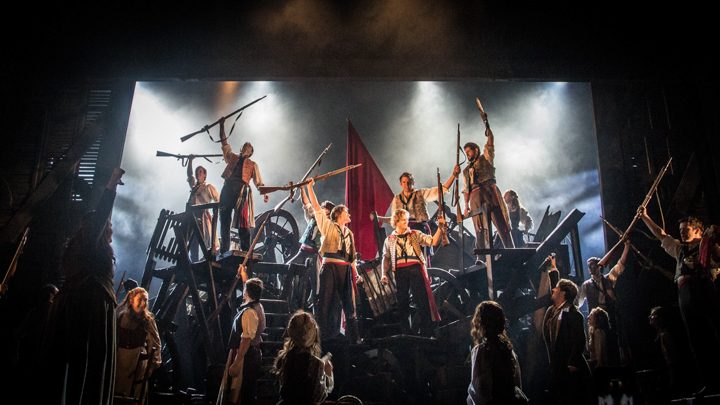
Les Miserables is a classic. There will always be something new to experience or to ponder about after watching every iteration of the musical. In fact, even a smaller production of the musical will reveal a certain appreciation that may open doors and windows to better understand or fathom the work.
The Manila production does have its faults, but it is those faults that have enunciated the qualities of the musicale that are often eclipsed by sheer spectacle.
The mere presence of Rachelle Ann Go, the promising lass who won a local talent contest years ago and has gone to win the hearts of many in an international arena of far more experienced thespians, is enough to enchant. Her vastly expressive singing voice and intuitive acting grant the character of Fantine a full armory of pain, heartache and sorrow. These inevitably turn all her scenes in the musicale into emotional highlights.
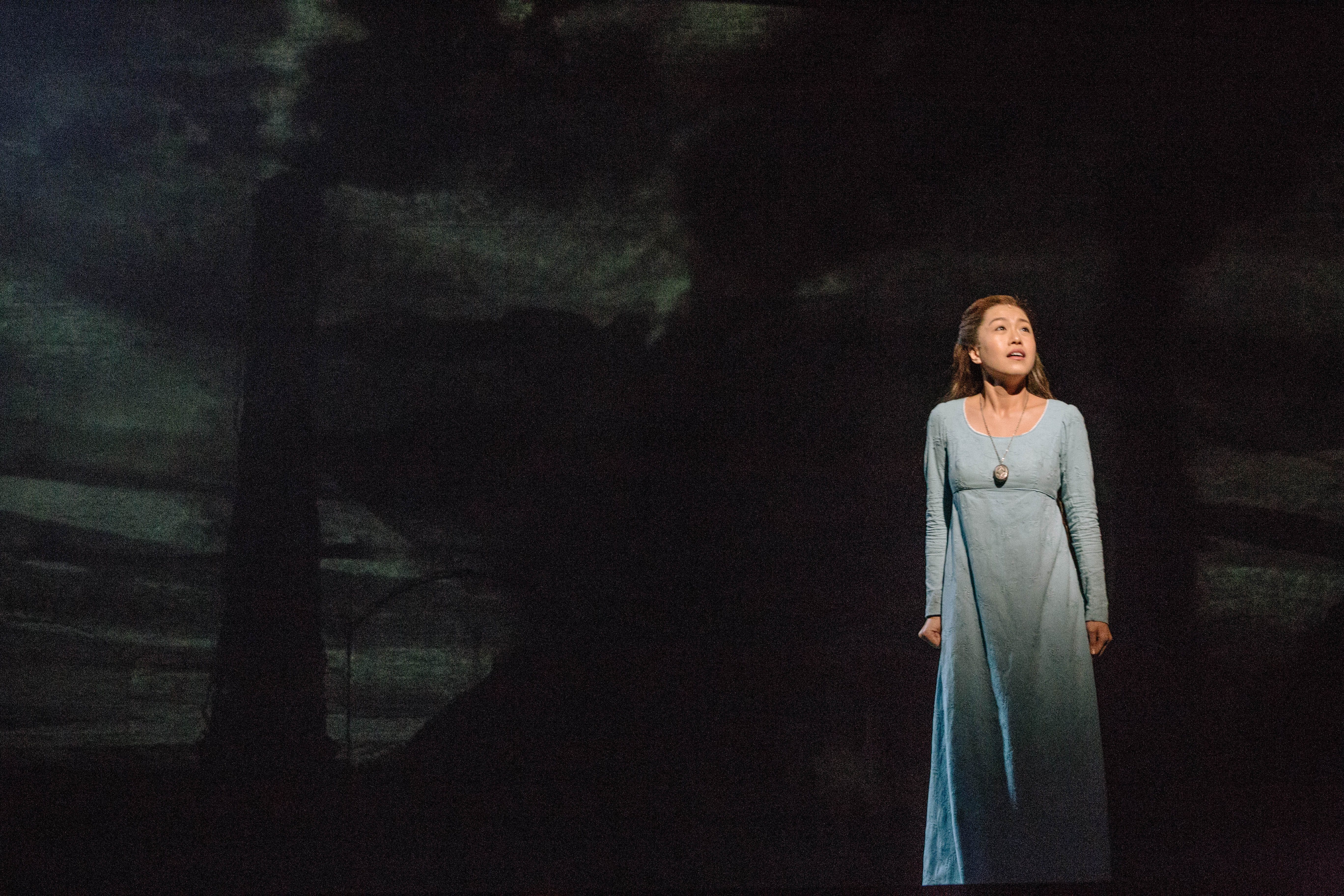
– Rappler.com
The photos and videos that appear in this article were taken at a special media call held on March 15, Tuesday, upon the invitation of the show producers, Concertus Manila. All photos by Paolo Abad/Rappler
 Francis Joseph Cruz litigates for a living and writes about cinema for fun. The first Filipino movie he saw in the theaters was Carlo J. Caparas’ ‘Tirad Pass.’ Since then, he’s been on a mission to find better memories with Philippine cinema. Profile photo by Fatcat Studios
Francis Joseph Cruz litigates for a living and writes about cinema for fun. The first Filipino movie he saw in the theaters was Carlo J. Caparas’ ‘Tirad Pass.’ Since then, he’s been on a mission to find better memories with Philippine cinema. Profile photo by Fatcat Studios
More about Les Misérables in Manila:
- WATCH: Rachelle Ann Go sings ‘I Dreamed a Dream’ from ‘Les Misérables’
- WATCH: ‘Les Misérables’ Manila cast performs ‘One Day More’
- WATCH: Jean Valjean in emotional ‘Les Misérables’ Manila scene
- WATCH: ‘Les Misérables’ cast performs ‘One Day More,’ finale at rehearsal
- Sneak peek: Rachelle Ann Go sings as Fantine, see the amazing ‘Les Misérables’ cast
- 8 reasons to watch ‘Les Misérables’ in Manila
- [About the Manila cast] Driven to tears: ‘Les Misérables’ in Brisbane
- Rachelle Ann Go’s important tips for taking career risks
- Confirmed: ‘Les Misérables’ coming to Manila, Rachelle Ann Go to star as Fantine
Add a comment
How does this make you feel?
There are no comments yet. Add your comment to start the conversation.